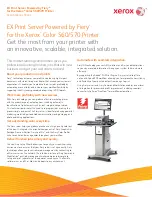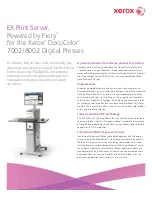
Communication Interfaces 10-12
3. The printer activates ACK- (e) to signal the host that the receive
buffer has received the character.
4. If the character does not fill the receive buffer, the printer
deactivates BUSY and ACK- (f) to notify the host that the
transfer operation is complete. The host can then initiate another
data-transfer cycle.
If a character-transfer cycle fills the printer receive buffer, BUSY
remains active until the buffer empties to the ready point. The printer
then deactivates BUSY to allow the host to initiate another
character-transfer cycle.
Parallel Interface Timing Requirements
Item
Ref.
Timing Requirements
DATA1-8
a
The host writes a character to the
interface.
a-b
Data stabilization time, 0.5
µ
s min.
b-c
Data hold time, 0.5
µ
s min.
STROBE-
b
Leading edge must not occur in less than
0.5
µ
s after the character has been
written to the interface. This allows time
for the data to stabilize.
b-d
Minimum pulse width, 1.0
µ
s.
b-h
Minimum time between pulses, 1.0
µ
s.
BUSY
b
Leading edge occurs within 100 ns
after the leading edge of STROBE-.
f
Trailing edge must occur before the host
can strobe the next character into the
receive buffer. For normal write cycles
(receive buffer not full), this occurs at
10
µ
s min., 500
µ
s nom., and 1000
µ
s
max. after the leading edge of STROBE-.
ACK-
e-f
Pulsewidth: 2.0
µ
s min., 3.0
µ
s nom.,
and 6.0
µ
s max.
Summary of Contents for 8900 Series
Page 38: ...Character Sets and Global Commands 3 7 IBM PC1 Character Set Right Half ...
Page 40: ...Character Sets and Global Commands 3 9 IBM PC2 Character Set Right Half ...
Page 42: ...Nordic PC Character Set Right Half Character Sets and Global Commands 3 11 ...
Page 44: ...ISO 8859 1 Multinational Character Set Right Half Character Sets and Global Commands 3 13 ...
Page 46: ...Character Sets and Global Commands 3 15 IBM Multinational Character Set Right Half ...
















































